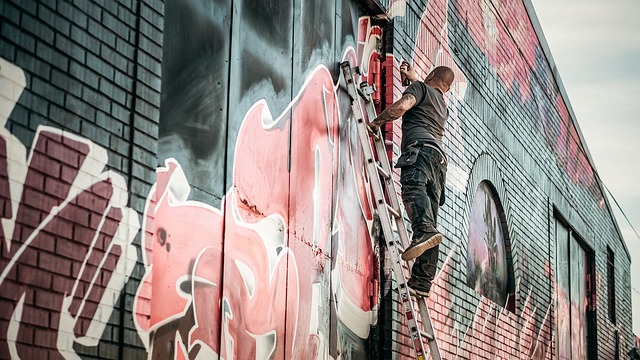Augmented Reality's New Canvas: Digital Graffiti
In the vibrant realm where technology and street art collide, a revolutionary form of creative expression is taking shape. Digital graffiti, powered by augmented reality (AR), is transforming urban landscapes into dynamic, interactive canvases. This emerging art form blends the raw energy of street art with cutting-edge technology, allowing artists to create ephemeral masterpieces that exist in the digital realm yet interact seamlessly with physical spaces. As smartphones become our windows to this augmented world, digital graffiti is redefining the boundaries of public art and challenging our perceptions of urban aesthetics.

AR Technology: The Enabler of Digital Expression
The rise of digital graffiti is intrinsically linked to advancements in AR technology. Modern AR platforms allow artists to anchor digital creations to specific geographic locations or physical markers, ensuring their work remains in place for viewers to discover. This technology enables a level of precision and interactivity previously impossible with traditional graffiti, opening up new avenues for artistic expression and audience engagement.
Breaking Free from Physical Constraints
One of the most compelling aspects of digital graffiti is its ability to transcend the physical limitations of traditional street art. Artists can create massive, intricate pieces that would be impractical or impossible to execute with spray paint alone. Moreover, digital graffiti can be animated, interactive, and even responsive to environmental factors like time of day or weather conditions, adding layers of depth and dynamism to the artwork.
The Democratization of Urban Art
Digital graffiti is democratizing the world of street art in unprecedented ways. While traditional graffiti often requires physical access to spaces and carries legal risks, digital graffiti allows artists to place their work virtually anywhere in the world. This accessibility has led to a surge in participation from artists of diverse backgrounds, each bringing their unique perspectives to the urban landscape.
Challenges and Controversies
As with any emerging art form, digital graffiti faces its share of challenges and controversies. Questions of ownership, copyright, and the right to virtual public space are at the forefront of debates surrounding this medium. Additionally, concerns about digital pollution and the oversaturation of augmented spaces have led to discussions about regulation and curation of digital graffiti in urban environments.
The Future of Urban Aesthetics
The integration of digital graffiti into our cityscapes raises intriguing questions about the future of urban aesthetics. As the lines between physical and digital realities continue to blur, we may see a shift in how we perceive and interact with public spaces. Urban planners and architects are already considering the potential of AR in designing future cities, where digital art could play a central role in creating dynamic, ever-changing environments.
Preservation in the Digital Age
Unlike traditional graffiti, which is subject to weathering, removal, or being painted over, digital graffiti presents unique challenges and opportunities for preservation. While the artworks themselves exist in digital form, ensuring long-term access and maintaining the integrity of the viewing experience as technology evolves are critical considerations for artists and curators alike.
The Global Canvas: Digital Graffiti Around the World
From the streets of Tokyo to the alleys of São Paulo, digital graffiti is making its mark on cities worldwide. Each locale brings its own cultural context and artistic traditions to this new medium, resulting in a rich tapestry of global digital street art. Festivals and events dedicated to digital graffiti are emerging, showcasing the diversity and creativity of this global movement.
Bridging Virtual and Physical Realities
Perhaps the most profound impact of digital graffiti lies in its ability to bridge virtual and physical realities. By overlaying digital content onto the physical world, it creates a hybrid space that challenges our perceptions of reality and encourages us to see our surroundings in new ways. This blending of realities opens up exciting possibilities for storytelling, education, and social commentary within urban spaces.
As digital graffiti continues to evolve, it stands poised to redefine the relationship between art, technology, and public space. This innovative medium not only offers new avenues for artistic expression but also invites us to reimagine our urban environments as living, breathing canvases. In the coming years, the interplay between digital and physical realities in our cities promises to be one of the most exciting frontiers in contemporary art and urban design.





